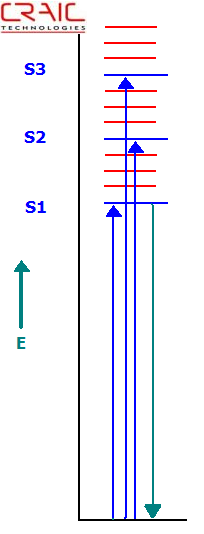Fluorescence

Fluorescence is the emission of a photon with the decay from the S1 excited state to the S0 ground state. Generally, fluorescent emissions occur approximately 10-9 to 10-7 seconds after excitation. Fluorescence spectrometers are designed to collect and measure the emitted photons.
The microfluorometer is a fluorescence spectrometer interfaced with a microscope. They are designed to measure fluorescence spectra of microscopic samples or microscopic areas of larger objects. There are two basic types: the fully integrated microfluorometer that has been built and optimized for fluorescence microspectroscopy and the fluorescence spectrometer unit designed to attach to an open photoport of an optical microscope. The beauty of microfluorometers is that they can also be configured to measure the transmission and reflectance spectra of microscopic sample areas in addition to fluorescence. And with special software, they are capable of colorimetry as well.
A CRAIC Technologies™ microfluorometer is a purpose-built system that allows you to analyze UV-visible-NIR range fluorescent emissions non-destructively and with no sample contact. Capable of analyzing even sub-micron areas, they are also capable of high resolution digital imaging. Designed for ease-of-use, they are durable instruments designed for microscale spectroscopy.
To learn more about microspectroscopy and microfluorometers, select one of the following links:

